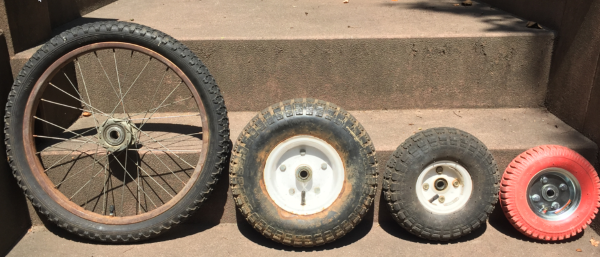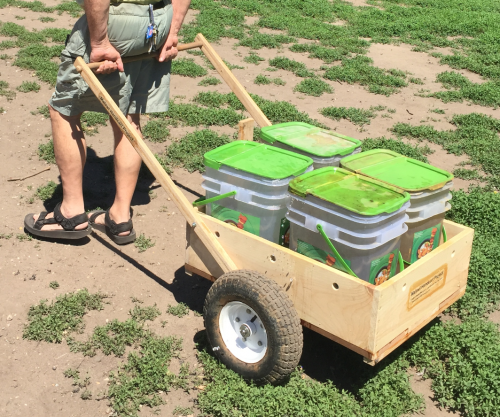An affordable bicycle-wheel wood-frame handcart has been developed in Malawi for agriculture rural and urban transport.
“The Malawi Cart” has been designed for smallholder farmers and by city dwellers for whom animal drawn carts are unaffordable or impractical or both. The cart derives from existing bicycle-wheel-handcart designs, most of which have until now been executed in steel, plywood, or some combination of the two. (Sullivan, 1983; Hathway, 1985; Barwell et al. 1985; Dennis & Smith, 1995; Doran, 1996; Stiles & Stiles, 1998).
Designed to require only common lumber
All of these earlier designs however, have only limited potential for widespread adoption in SSA due to their use of these expensive, difficult-towork and/or hard-to-find building materials. The Malawi Cart was designed to require only common lumber and two ordinary bicycle wheels. Fasteners are common nails, along with a few wood screws and small bolts. Several large (8mm x 15mm) bolts were used in the prototype, but when such bolts were found to be unavailable in the nearest large town, widely available and cheaper bicycle rear axles were substituted for them in all later models.
The Malawi Cart rides on two 28-inch bicycle rear wheels. The rear wheels were chosen over front wheels because of their greater strength. They have 40 spokes (as against a front wheels’ 36), their axles are longer and thicker and their ball bearings larger. In Malawi, the cost of a rear wheel differs from the cost of a front wheel merely by the price of the four extra spokes. The rims commonly available in Malawi are of the archaic and inherently weak Westwood pattern. Where available, the far stronger Westrick (or Endrick) pattern rims should be employed.
The Malawi Cart was designed so that its body four sidewalls and most of the floor can be easily removed without tools (it is fastened in place by four wooden swivel catches) to facilitate the carriage of long poles and planks. The design also allows for alternative, purpose-built cart-bodies to be dropped in place on an existing cart chassis.








